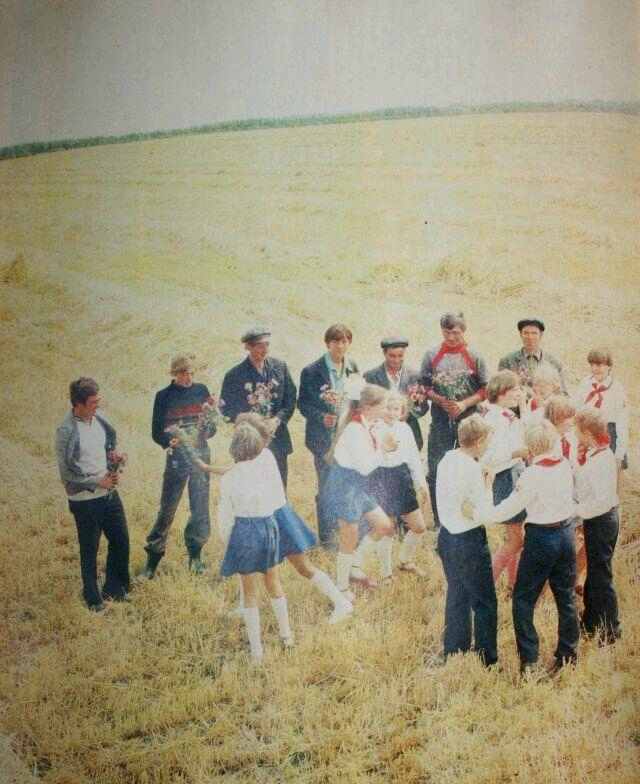
Soviet Agricultural Production

Figure 1.--Here is harvest ceremony in the Sovit Union, probably taken about 1980. It involves both collective farmers and school children. A Russian reader tells us that it was a local harvest celebration involving the town secondary school. It was not a national holiday.
|
|
Agricultural production after impressive gains durng the NEP of the 1920s declined sharply in the 1930s. This was in sharp contrast to rising industrial production and wholly the result of Stalin's decession to end individual peasant propretorship (1929-31). Soviet planners were to learn that ideology could not bend the iron laws of economics. Throughout the Soviet era beginning with the First Five Year Plan, agriculture would prove to be a great failure. The initial disruptions associated with collectivization might have been expected. Killing off 1 million of the country's best farmers explain in part why agricultural production did not recover. But even after World War II, agricultural harvests continued to disappoint, suggesting that there were inherent weaknesses in the collective system itself and the concept of state managed agriculture. This was in sharp contrast to agriculture in the United States where the problem was over abundant harvests forcing the state to pay farmers not to produce. While farm productivity declined, it was wholly in the state's control and could be used to finance and support the country's industrialization. The question arises is if the Soviets would have better better off without collectivization. Certainly production would have been higher, but it would also have been more difficult to extract as much from an independent peasantry. The Sovieets in effect reduced rural income and transferred this to industrial workers. Actual farm oroductioin declined substantially and would not recover until many years after World War II. Of course production was not only affected by collectivization, but also by the terrible destruction occurring during the War. And even after harvests began to increase, there was no longer a surplus available for export. Soviet agriculture was unable to even satisfty domestic demand. Russia was once the bread of Europe. The Soviet Union even years after World war II was the world's largest importer of grain and livestock products. Governments efforts to reserect the farm sector were titanic failures. One assessment claims that an unbelievable 35 percent of the country's investment budget at one point went to agriculture. [Medvedev] Some critics complain that Western critics of Soviet agriculture are ideologically based. Thus we would like to obtain actual production data, but have not found aood source on the internet. Of course Soviet statistics have to be considered with a degree of skepticism. Here export data is more difficult to manipulate and thus may be aore reliable indicator.
Sources
Medvedev, Zhores A. Soviet Agriculture.
HBC

Navigate the Boys' Historical Clothing Web Site:
[Return to Main Stalinist assault on the peasantry page]
[Return to Main Great Patriotic War page]
[Return to Main Soviet school page]
[About Us]
[Introduction]
[Biographies]
[Chronology]
[Climatology]
[Clothing]
[Disease and Health]
[Economics]
[Freedom]
[Geography]
[History]
[Human Nature]
[Ideology]
[Law]
[Nationalism]
[Presidents]
[Religion]
[Royalty]
[Science]
[Social Class]
[Bibliographies]
[Contributions]
[FAQs]
[Glossaries]
[Images]
[Links]
[Registration]
[Tools]
[Children in History Home]
Created: 2:32 AM 11/23/2008
Last updated: 2:32 AM 11/23/2008



